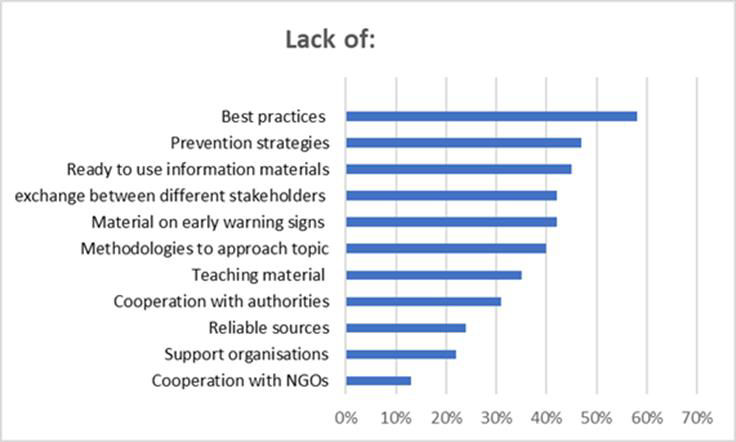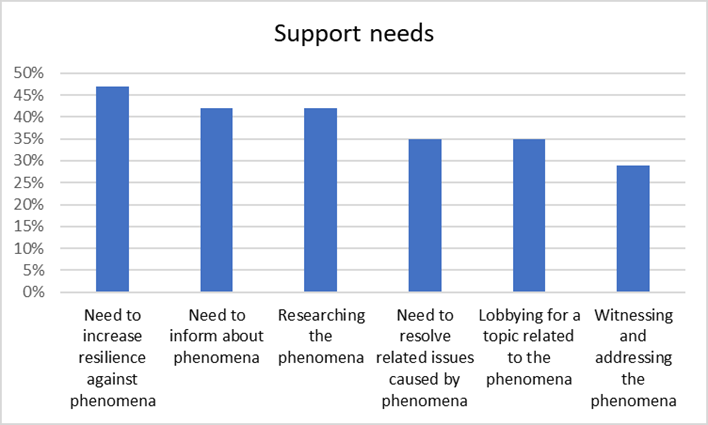Prologue
During the past months, we, the consortium of project Re-ACT, have been busy to gather and consequently analyse the responses to our end-user survey. The survey was carried out, alongside two workshops, to identify how Re-ACT can establish an online prevention hub, which supports those with potential to come into contact with or already actively addressing antisemitism and/or antigypsyism, like educators and youth workers.
Having completed the analysis, we would like to share some of our findings as the survey yielded a number of insightful and interesting results.
However, we first would like to express our gratitude for your participation, having received over 100 answers from 25 different countries: Thank you!
Insights Re-ACT end-user survey
Overall, the need for an online solution, focusing on antisemitism and antigypsyism and other forms of hate speech especially online was reinforced by the results of the needs and requirements analysis.
The survey showed that while existing online solutions are already being used to tackle and inform on hate speech, a lack of solutions dedicated especially to antigypsyism was pointed out repeatedly by those surveyed. Furthermore, many other significant support-needs seem to remain unadressed, indicating the need and opportunity for Re-ACT´s prevention hub to make a tangible difference.
As such, also a number of barriers were identified by the survey, hindering stakeholders and practitioners to address antisemitism and antigypsyism in the most effective manner.
The strongest finding, shared by 58% of those surveyed, was a “Lack of best practices on how to address the topic in different circumstances”, followed by “need for prevention strategies” and “ready to use information materials”. Best practices were indeed mentioned repeatedly throughout the survey, with 74% seeing them as very helpful to address antisemitism and/ or antigypsyism. To some degree related to the lack of best practices, a lack of exchange between different stakeholders and topic areas was also seen as a barrier by many.
This also became indirectly evident in other findings, as often complementary differences between the needs and areas of expertise of those surveyed emerged. For instance, the graph below (graph number 2) highlights the multiple areas in which practitioners expressed to either require support or not. The results symbolise the diversity of the stakeholders but also the potential to address support needs through exchange, as a majority in each of the areas outlined below, indicated to not require additional support. This became especially evident in the area of witnessing and addressing the phenomena directly, where significant support needs were identified by 29%, who could potentially profit from the knowledge and experience of the 71% not requiring support.
Similarly, the level of self-perceived preparedness to address antisemitism or antigypsyism not only laid significant differences between individuals bare but also between topic areas.
For instance, while only 4% of those surveyed saw themselves as not prepared at all to address antisemitism, this number rose to 12% when asked about preparedness to address antigypsyism. This is especially problematic, as online-antigypsyism was encountered by the highest number of participants either often or very often in their work.
Thus, the online focus of the envisioned prevention-hub and project Re-ACT was reinforced, while a clear need for better exchange and availability of materials and best practices, was identified.
With a total of 38 questions, the survey produced a rich number of additional insights, also on more technical issues like the preferred format of materials. The findings provide a strong evidence base and needs analysis from which Re-ACT will derive the individual modules and functions of the prevention-hub to address the identified challenges and barriers as well as to enable practitioners and stakeholders from various backgrounds to better address antisemitism and antigypsyism.


